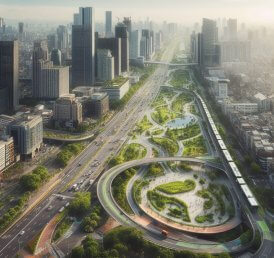Do PPP Projects have all the tools to fix the country?

By Bareera Gulzar
Pakistanis’ have been suffering since God knows when, due to lack of proper infrastructure of their cities like no decent roads, highways, drainage systems, etc. Many projects were started but have yet to see their completion stage due to lack of recourses and intention. With some financial help and guidance from the government, many private parties have completed, or at first, the place started various projects for the welfare of the community.
Like the ring road in Lahore, my life has become much easier since it’s inauguration. I quickly go to LUMS without worrying about stopping at signals. Visiting Islamabad and other cities is not a big deal anymore because of the presence of motorways. These capital-intensive building projects done by the private sector’s involvement have contributed to the welfare of most people. The shift in the burden of community service from the government to the private sector has been noticed, leaving room for the government to focus on various other problems faced by the country.
To increase such projects’ efficiency, the private entities engage in profitable partnerships with the government by providing them with their technology, innovation, and financing. This relationship is known as PPP (Public-private partnership). PPP is a very broad term that majorly consists of project finance. The debt and equity used to finance the private sector project are paid back from the cash flow generated by the project, just like the Lahore Islamabad motorway. The government lacked the resources to complete the task; thus, it was handed over to the private party, who, after completion, had control over it until the amount was recovered by toll tax.
Although PPPs have helped fill the infrastructural gaps in Pakistan, they don’t have all the tools in their toolbox to fix the country. Firstly, problems like water and sanitation require a tremendous amount of investment for a satisfactory result. The government is asked to keep the price below the cost, therefore, has to bear the viability gap itself. Keeping this in mind, the government tries to avoid giving such projects to private investors. Another issue is that private sectors focus more on profit; hence these utility-based projects are less likely to succeed under a private party.
Secondly, with the change of regime, the policy changes either stop the progress of an ongoing project or create difficulty for coming projects. Like in the 1990s, when an inquiry was held for the IPP award, it created problems for the foreign investors who feared litigation and eventually left the country. Punjab education foundation (PEF), which was introduced in Pervaiz Elahi’s tenure, has provided education to over 350,000 children. This foundation was funded even by Shahbaz Sharif; however, recently, fund allocation has been hampered, causing many children’s dropping out of school. With that, the government has changed the managing directors creating tussles between the private and public representatives. This is an alarming situation considering the ongoing pandemic affecting the education of children. A similar tussle was noticing between Jahangir tarin (Private representative) and Pervaiz Elahi (Government representative) in the Sundar industrial estate (SIE) case over the board of directors, which affected the overall efficiency of the estate.
Thirdly, the enormous number of clearances, approvals needed to start a public-private partnership is hugely frustrating for the private investors who have invested their money and time for a specific project. We see how the private sector is finding profitable opportunities for investment. Still, such opportunities are not provided by the government, limiting the capacity of the Public-Private Partnerships (PPPs) to fix the country. They even have some tools missing in their toolbox.



